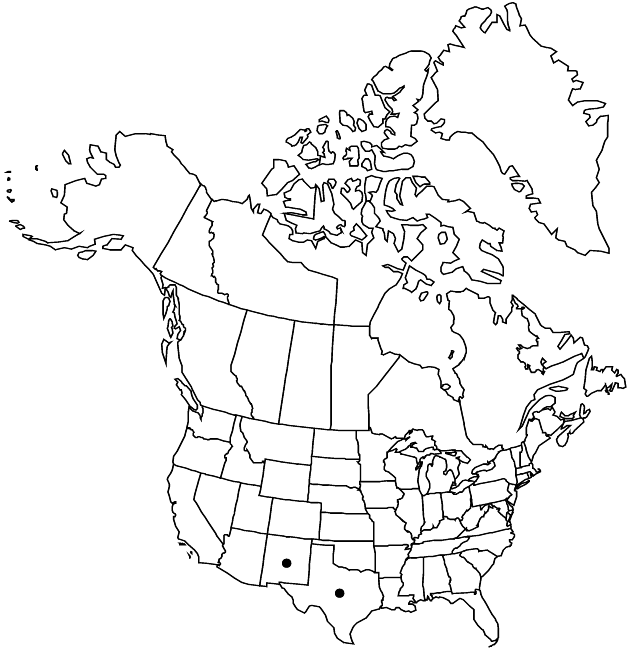Senecio warnockii
Sida 1: 379. 1964.
Subshrubs, 20–40 cm (taproots forming woody crowns). Herbage closely, unevenly lanate-floccose, glabrescent. Stems usually multiple (strict or nearly so, arching-erect). Leaves (often recurved and thickish-turgid) concentrated distally on stems; sessile or obscurely petiolate; blades narrowly linear to filiform (2–7 cm × 1 mm), bases ± linear, margins entire. Heads 3–10 in corymbiform arrays (involucres weakly campanulate). Calyculi 0 or of 3–5 bractlets (lengths less than 1/2 phyllaries). Phyllaries ± 13, 5–8 mm, tips green or minutely black. Ray florets usually ± 8, rarely 0; corolla laminae 5–10 mm. Cypselae glabrous.
Phenology: Flowering fall (perhaps spring–summer).
Habitat: Open sites, gypseous soils
Elevation: 800–1500 m
Discussion
Of conservation concern.
Senecio warnockii is infrequently collected; additional study may show it to be an edaphic phase of S. flaccidus. The restriction to gypseous soils and the gross aspect combine to make it distinctive.
Selected References
None.
